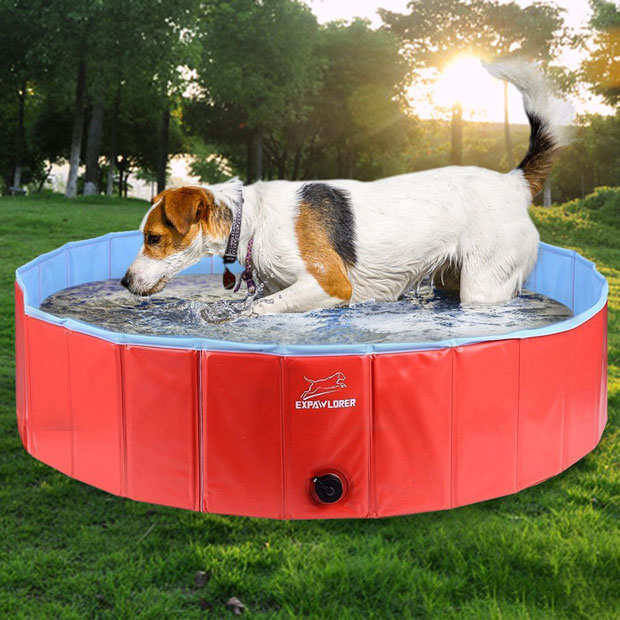Health
10 Tips to Keep Your Dog Cool on a Hot Summer Day
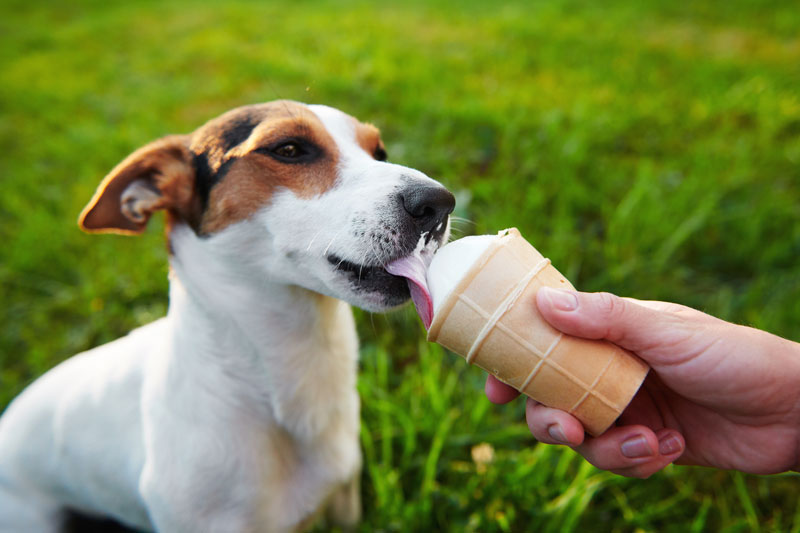
Today more than ever, dogs have come to be more than just a “pet”.
Canines are family members; with this everlasting bond comes a great deal of responsibility on the human end. Similar to our children, (though they never beg for designer jeans, or borrow your car without asking), dogs trust us implicitly; they rely on our judgment and the longevity of our commitment to them.
As summer closes in, my recent move to Arizona brought new concerns in regard to my 2 dogs and the hot weather to come. I thought best to look into the most effective ways to keep them cool and prevent any overheating and medical problems from occurring.
I came across some tried and true methods (primarily common sense); however I also fell upon some high-tech gadgets that I’m sure would appeal to those who love a new electronic toy, or are too busy to rely on themselves during the hectic work week.
Below is a list I hope you find helpful in relation to keeping your dog hydrated and cool at all times. You may be surprised to find out how quickly our beloved pals can go downhill, in climates we may not feel are “hot”.
Dogs do NOT have a very efficient way for their bodies to cool down. They must rely on panting, and dogs will often push themselves past the point of exhaustion, especially if they are having fun!
I will share a few breeds that do better in the heat, and a few that may need a little extra attention, as well as some direction if you suspect your dog has fallen victim to heatstroke.
10 Tips to Keep Fido Frosty
1. Using Self Cooling Pads/Mats/Vests
You can purchase these online or at almost any pet retail store. You will want to make sure that the vest fits your dog appropriately, and that the materials in the vest and self-cooling bed are the correct type.
Simple ways to do this: reading reviews from other pet owners online, talking to other dog owners, or heading in-store to do some of your own research, (speak to some employees).
It is important to remember that this is just one option. If you cannot afford mats or vests, there are plenty of other ways that may be more effective or just as good. I will link some of these products below.
Dog Cooling Pad
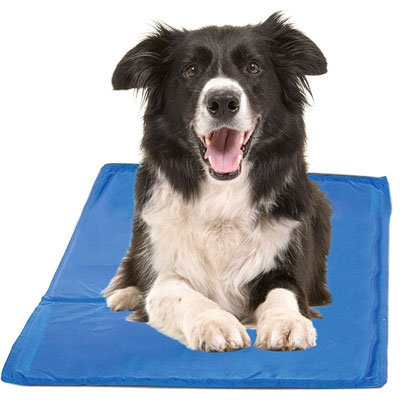
Keeps your dog cool and comfy with pressure activated gel technology that absorbs body heat and delivers relief from the heat.
Dog Cooling Vest
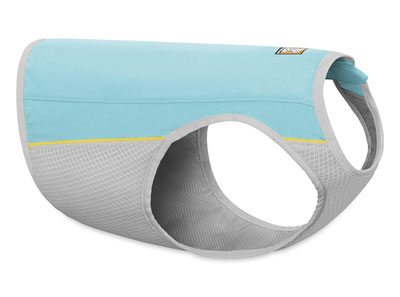
The layered construction is designed to keep your dog cool when the temperature rises. The outer layer reflects heat and facilitates evaporation while the middle layer absorbs and stores water for evaporation.
2. Clean, Never-ending Supply of Water
Water is absolutely as essential to dogs as it is to humans. Dogs can survive off just water alone for quite a few days, but without this, they perish in under a week.
Now water may seem simple, however there are pet owners out there who find that their dog is very fussy when it comes to water. Now if your dog is fine with water from the faucet then great, but they may be put off by the smell of the chemicals in the water. This varies depending on the particular area you are in.
Doggie Water
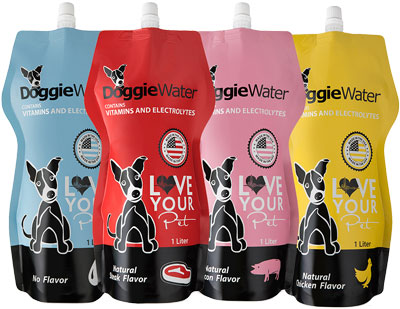
DoggieWater is a dog sports drink that contains vitamins and electrolytes that are an important part of your dog’s diet and essential for good health.
If your dog likes bottled water only, then give him or her bottled water. Make sure that the bowls are cleaned and fresh water is given daily.
You can purchase a doggy water dish with a reservoir that is hooked up to a pool hose or tap, so that your dog is never in jeopardy of running out.
Drinkwell Everflow Indoor/Outdoor Dog Water Fountain
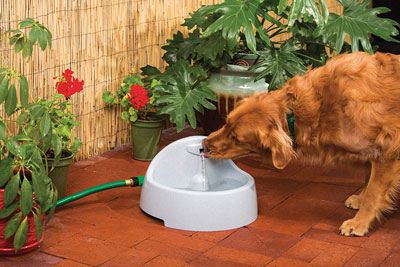
Fountain automatically refills when connected to a standard garden hose. UV resistant plastic helps prevent fading when used outdoors.
There are also dishes on timers, and high-tech water fountains activated by your dogs’ very presence. If your dog is pregnant or lactating the importance is even more so.
3. Onging shade
Some dogs are 100% outdoor animals regardless of the season. Create or find adequate shade that does not dissipate or move away from your dogs’ location; depending on where the sun may be, this is paramount.
In other words: trees may not be reliable in terms of all day shade.
You could build something if you are the DIY type. If you are more like me, you may want to head down to the pet shop and grab a well-aerated dog house, or “Doggy Igloo”.
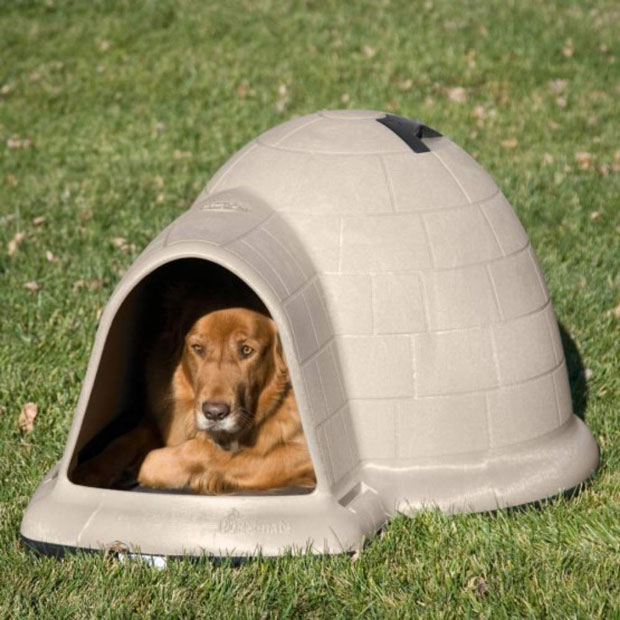
Probably the simplest pointer: if your dog is tied up, make sure he can get to shade at all times and has water all day long.
4. Grooming
Now some breeds of dog have one coat and some have a double coat. I will delve into the hot weather and cold weather breeds a bit later. For now what you need to be aware of is relatively common sense.
FURminator - Deshedding Tool
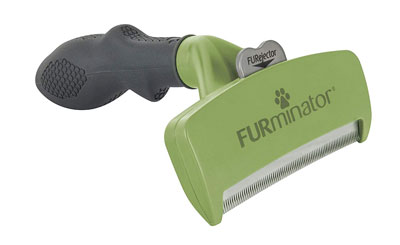
Removes loose hair: reaches through the topcoat to remove loose undercoat hair without cutting skin or damaging the topcoat.
If your dog has a lot of fur, and it’s hot outside, you may want to give them a trim or send them to the groomers (if the budget allows). This would be of upmost importance if you have a double coat breed and just moved to the desert.
5. Air Condition & Fans
Not every household is blessed with, or may in fact need A/C during the summer months. To simplify things on the whole temperature front; I often say to myself, “If my dog left the house right now and didn’t turn on the swamp cooler or A/C, would I be hot?”
Chances are, if you are hot, so is your pet.
If you do not have A/C or a swamp cooler you can purchase a fan for a low price or even pick one up at a thrift store. I recommend buying one that your dog can park his/her body directly in front of when needed.
You can also purchase dog carriers with built-in fans for travel.
6. Don’t Leave Your Dog in the Car, Period!
Similar to what we have learned about infants, your dog can die from spending just 5 or so minutes in a car while you are out running a quick errand. Even with the window cracked, on relatively mild days when it is 75- 80 degrees Fahrenheit outside, the temperature can climb up to 100 degrees within just a few minutes.
This is the leading cause of heatstroke for our canine companions.
7. Paw Protection
Dogs do have sweat glands on the pads of their feet; however, they are not very effective.
On sunny days you should always place your palms on the pavement to see if the ground is hot. If so, avoid taking your dog for a walk at that time or you can fit them with shoes made specifically for dogs.
Dog Paw Protector
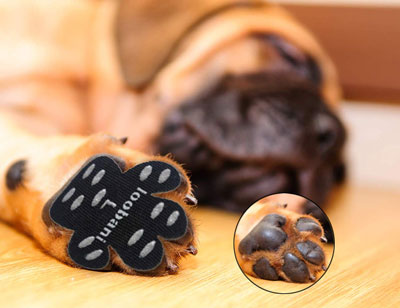
Protect your dog's paws safe from getting burned on hot pavement indoor or outdoor in all year all weather.
You will probably need to practice walking your dog with these, as some may not be altogether thrilled initially. You can also stick to grass on hotter days, as it’s typically the most cool and comfortable outdoor base for your dog’s feet.
8. Hydration On-the-go
If you are taking your dog out for a walk or run, you will want to bring water or an icy dog treat with you. There are plenty of different types of containers designed to be portable at your local store or online.
Keep one in your car at all times, and make sure to keep the water fresh and the container clean. You can also purchase frozen treats specifically for dogs that serve as a quick way to cool them down, perfect for tossing in the cooler at an outdoor BBQ.

If you enjoy hiking and taking your pup with you, this no spill travel bowl is a perfect way to keep water with you on the go.
9. Morning & Evening Walks
A general rule of thumb, especially important if you live in a state that experiences temps in the 90’s and 100’s, would be to take your dog out early in the morning or after sundown.
Avoiding the sun can limit issues with the ground, especially if you don’t have any grass to walk your dog on, or protective shoes.
If you are gone at these times, you may want to enlist the help of a dog walker. Make sure that your dog walker or pet sitter is up to speed on heat- stroke prevention, never assume! Make sure you cool your dog down after 20 or so minutes of exercise.
10. Pool Party
You probably already know if your dog is a water baby or not. If he is then swimming is a great way to keep your dog cool. Be sure to keep an eye on them; you can even purchase a doggy life jacket in case your buddy gets tired mid- swim.
If your dog is terrified of the pool, too young or too old, or too lazy, then you can alternately have a sprinkler going for them. You can also purchase a child paddling pool and see if this is more appealing. Wetting some towels and placing them on your dog, or putting them in the sink or bathtub is another way to keep them cool.
Which Breeds Do the Best and Worst With Heat?
Though you may not have control over where you live and what kind of dog you already live with, you can be aware of the risk factors involved with your dogs breed.
Some dogs are much more susceptible to heat-stroke than others.
There are over 50 breeds of dog, so here is just a mention of a few more popular breeds.
Airedale terriers and the bichon frise are adaptable to most environments.
In contrast, the Doberman and Dalmatian prefer a warmer climate. The Alaskan malamute and Siberian husky prefer a colder climate; this has much to do with their coats.
The pug, bulldog and boxer all have smaller airways, and have a lower ability to blow out hot air, therefore keeping them cool is extremely important.
German shepherds and Old English sheepdogs also have a double coat; these dogs are more prone to heat-stroke, and hold on to more heat than poodles or terriers.
Signs of Overheating
A few signs that your dog may have succumbed to over-heating are as follows:
- panting very heavily (you can observe their sides heaving)
- excessive salivation
- glassy eyes
- bright red gums
- bloody diarrhea may be present
- vomiting
- Your dog may even become wobbly and too weak/disoriented to stand if he gets too warm or dehydrated.
How to Cool Your Dog Down Quickly
If any of these symptoms occur you should immediately try to cool your dog down.
Do not put them in icy water as this may be too extreme of a change to the system.
You can drape wet towels, or use a spray bottle, as well as provide drinking water if not already present. It is recommended to take your dog to the vet if any of these occur to make sure things are OK, and that your dog is properly hydrated, (they may need an IV of fluid).
You also want to be aware of your dogs’ age; if your dog is older, he is most likely not as strong as a younger dog and you may want to go easy on him exercise-wise.
When it comes to heat exposure: if your dog is a puppy, you may want to be careful when putting them in any kind of pool, and also be vigorously aware of how long you expose him/her to the elements, and the time of day.
Summary
Snuggles and treats are forever welcomed, however, true caring for our furry family member comes through the efforts we make to dig below the surface of general knowledge. Doggy do’s and don’ts vary greatly depending on breed, age, weight, and much more. All of this information is easy to find through a few quick internet searches, books, and past experience is also handy. A few simple choices and provisions can not only save a few pennies, but ultimately save your dogs life.
- Topics:
- Health

